R.J. Stowell's Blog: rjsomeone, page 14
December 8, 2020
Lennon

It's one of those days we all remember. For me, I heard the news in my car coming home from a film class at UCLA. I had to pull over. When I got home to my apartment in Beverly Glen, I didn't put on any lights and sat at the end of the bed. It was overwhelming. It seems just a short time ago, not 40 years.Lennon didn't smile in photographs; odd for someone who was always laughing, being silly or absurd. It's why I like this picture, taken from an interview.
Published on December 08, 2020 06:22
December 7, 2020
Frame of Reference
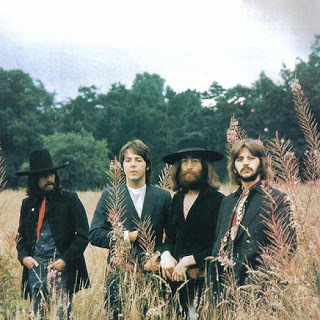 We've been looking back at the Beatles’ early solo efforts, which legitimately began in 1970. It's interesting to note the chart history of the Fab Four’s evolution from the first of the solos, George's Wonderwall Music, to the end of 1970 with John's "Mother," from the Plastic Ono LP. I've included Billboard's chart info for those LPs and singles that made the top 30.November 1, 1968: Wonderwall Music LP (George)November 11, 1968: Unfinished Music No. 1: Two Virgins LP (John) November 22, 1968: The Beatles LP (White Album) (Beatles) – No. 1January 13, 1969: Yellow Submarine LP (Beatles) – No. 2April 11, 1969: "Get Back" Single (Beatles) – No. 1May 30, 1969: "The Ballad of John and Yoko" Single (Beatles) – No. 8May 9, 1969: Unfinished Music No. 2: Life with the Lions LP (John)May 9, 1969: Electronic Sound LP (George)July 4, 1969: "Give Peace a Chance" Single (John) September 26, 1969: Abbey Road LP (Beatles) No. 1October 6, 1969: "Something"/"Come Together" Double A-Sided Single (Beatles) No. 1October 20, 1969: Wedding Album LP (John)October 20, 1969: "Cold Turkey" Single (John) – No. 30December 12, 1969: Live Peace in Toronto LP (John)February 6, 1970: "Instant Karma!" Single (John) - February 26, 1970: Hey Jude LP (Beatles) – No. 1March 6, 1970: "Let It Be" single Single (Beatles) – No. 1March 27, 1970: Sentimental Journey LP (Ringo)April 17, 1970: McCartney LP (Paul) – No. 1May 8, 1970: Let It Be album LP (Beatles) – No. 1May 11, 1970: "The Long and Winding Road" Single (Beatles) – No. 1September 25, 1970: Beaucoups of Blues LP (Ringo)October 5, 1970: "Beaucoups of Blues" Single (Ringo)November 23, 1970: "My Sweet Lord" Single (George) – No. 1November 27, 1970: All Things Must Pass LP (George) – No. 1December 11, 1970: John Lennon/Plastic Ono Band LP (John) – No. 6December 28, 1970: “Mother” Single (John)
We've been looking back at the Beatles’ early solo efforts, which legitimately began in 1970. It's interesting to note the chart history of the Fab Four’s evolution from the first of the solos, George's Wonderwall Music, to the end of 1970 with John's "Mother," from the Plastic Ono LP. I've included Billboard's chart info for those LPs and singles that made the top 30.November 1, 1968: Wonderwall Music LP (George)November 11, 1968: Unfinished Music No. 1: Two Virgins LP (John) November 22, 1968: The Beatles LP (White Album) (Beatles) – No. 1January 13, 1969: Yellow Submarine LP (Beatles) – No. 2April 11, 1969: "Get Back" Single (Beatles) – No. 1May 30, 1969: "The Ballad of John and Yoko" Single (Beatles) – No. 8May 9, 1969: Unfinished Music No. 2: Life with the Lions LP (John)May 9, 1969: Electronic Sound LP (George)July 4, 1969: "Give Peace a Chance" Single (John) September 26, 1969: Abbey Road LP (Beatles) No. 1October 6, 1969: "Something"/"Come Together" Double A-Sided Single (Beatles) No. 1October 20, 1969: Wedding Album LP (John)October 20, 1969: "Cold Turkey" Single (John) – No. 30December 12, 1969: Live Peace in Toronto LP (John)February 6, 1970: "Instant Karma!" Single (John) - February 26, 1970: Hey Jude LP (Beatles) – No. 1March 6, 1970: "Let It Be" single Single (Beatles) – No. 1March 27, 1970: Sentimental Journey LP (Ringo)April 17, 1970: McCartney LP (Paul) – No. 1May 8, 1970: Let It Be album LP (Beatles) – No. 1May 11, 1970: "The Long and Winding Road" Single (Beatles) – No. 1September 25, 1970: Beaucoups of Blues LP (Ringo)October 5, 1970: "Beaucoups of Blues" Single (Ringo)November 23, 1970: "My Sweet Lord" Single (George) – No. 1November 27, 1970: All Things Must Pass LP (George) – No. 1December 11, 1970: John Lennon/Plastic Ono Band LP (John) – No. 6December 28, 1970: “Mother” Single (John)
Published on December 07, 2020 07:51
December 4, 2020
Ringo
 Ringo's solo hit, "It Don’t Come Easy," a single-only release was the ex-Beatles' most significant offering as a songwriter, but it wouldn't be until 1973 that Apple released his first legitimate solo LP, simultaneously bringing The Beatles darn close to a reunion. The eponymous LP had each of the Fab Four on board, if not on the same tracks. What's brilliant about Ringo albums is that they keep your mind off all things annoying: politics, Covid, the president. Ringo albums are like parties and we're all invited, and this is the best party of all. Lennon’s "I'm The Greatest," a contribution from John, features three ex-Beatles on one track. (Paul was supposed to be there too, but a wacky weed snafu kept him from getting a Visa into the U.S.) Easily his best LP, Ringo was produced by Richard Perry, who recruited a bevy of fine musicians to help with his record: Marc Bolan, The Band, Martha Reeves, members of Badfinger, Stephen Stills, Billy Preston, Klaus Voorman, Nicky Hopkins, and, you know, the other Fab Three. Harrison co-wrote and played on the closer, "You and Me (Babe)," and co-wrote Ringo's best song as a solo artist, "Photograph." McCartney provided "Six O'Clock." For me, this one LP is enough, but I’ll be the first to point out that it’s Ringo who had the longest-running streak of ex-B singles with seven. Ringo made it to No. 2 on the Billboard album charts, foiled by Elton John's masterpiece, Goodbye Yellow Brick Road.
Ringo's solo hit, "It Don’t Come Easy," a single-only release was the ex-Beatles' most significant offering as a songwriter, but it wouldn't be until 1973 that Apple released his first legitimate solo LP, simultaneously bringing The Beatles darn close to a reunion. The eponymous LP had each of the Fab Four on board, if not on the same tracks. What's brilliant about Ringo albums is that they keep your mind off all things annoying: politics, Covid, the president. Ringo albums are like parties and we're all invited, and this is the best party of all. Lennon’s "I'm The Greatest," a contribution from John, features three ex-Beatles on one track. (Paul was supposed to be there too, but a wacky weed snafu kept him from getting a Visa into the U.S.) Easily his best LP, Ringo was produced by Richard Perry, who recruited a bevy of fine musicians to help with his record: Marc Bolan, The Band, Martha Reeves, members of Badfinger, Stephen Stills, Billy Preston, Klaus Voorman, Nicky Hopkins, and, you know, the other Fab Three. Harrison co-wrote and played on the closer, "You and Me (Babe)," and co-wrote Ringo's best song as a solo artist, "Photograph." McCartney provided "Six O'Clock." For me, this one LP is enough, but I’ll be the first to point out that it’s Ringo who had the longest-running streak of ex-B singles with seven. Ringo made it to No. 2 on the Billboard album charts, foiled by Elton John's masterpiece, Goodbye Yellow Brick Road.
Published on December 04, 2020 05:57
December 2, 2020
Paul's McCartney
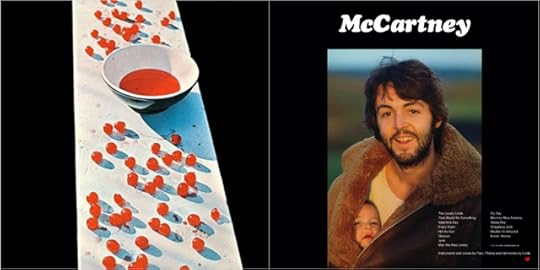
Recorded at home by himself while coming to grips with the demise of The Beatles, McCartney is a casual derivation of his solo career. It has neither the breadth of All Things Must Pass nor the purity of Plastic Ono, and for fans and the press who were expecting a home run, this was a bunt. Unfairly savaged at the time of release for not being Sgt. Pepper 2, McCartney's solo debut is a charmingly scrappy collection of casually-formed tunes, mostly played on acoustic guitar with only the occasional backup vocal from Linda. To say that it lacks consistency, despite the presence of several killer songs (most notably "Maybe I'm Amazed", which, had it been on a Beatles record, we'd now be talking about as a classic) is to miss the point: it's likable because it lacks polish and slickness. In the age of digital recording (my son does his music production sitting in his old MG at 3am), it's hard to imagine how difficult it must have been to set up and record the effort with such precision (such as it is). Paul, of course, is so talented that his doodling ("That Would Be Something") is better than most artist's best work. A fascinating album- the low points ("Kreen-Akrore", "Singalong Junk") are still interesting and add significantly to the atmosphere. "Maybe I'm Amazed", of course, is probably Paul's best song as a solo artist. The album made it to No. 1 on Billboard and in Canada, and No. 2 in the U.K. Most will consider it the first legitimate solo LP from an ex-Beatle.
Published on December 02, 2020 06:24
December 1, 2020
All Things... 50 Years On
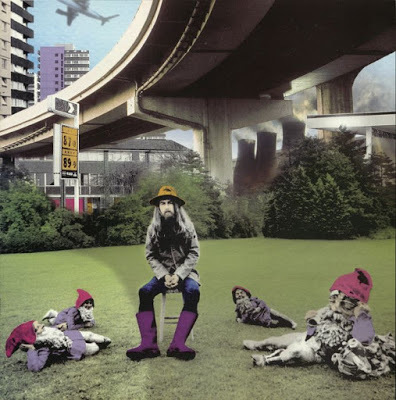 Harrison's triple album All Things Must Pass is a spiritual journey, touching on faith, death, life, love, evil. The first two LPs have nine tracks each, while the last record, sub-titled Apple Jam, has 5 sprawling tracks and features four jams with George and an assortment of illustrious buddies. Most of the songs are Harrison’s, the exceptions credited to Harrison/Dylan and Dylan.
Harrison's triple album All Things Must Pass is a spiritual journey, touching on faith, death, life, love, evil. The first two LPs have nine tracks each, while the last record, sub-titled Apple Jam, has 5 sprawling tracks and features four jams with George and an assortment of illustrious buddies. Most of the songs are Harrison’s, the exceptions credited to Harrison/Dylan and Dylan.Side one starts with the dreamy sounding "I’d Have You Anytime." Then comes the well-known "My Sweet Lord," the first ex-Beatle No. 1 and the biggest selling single in the world in 1970/71, followed by the lively, noisy rocker "Wah-Wah." The lyrics don’t make much sense, but it’s fun nonetheless. "Isn't it a Pity" has a fine sentimental, but a fitting end to a nearly perfect side. Side two starts in a livelier fashion with the upbeat love song "What is Life." In contrast, Dylan’s "If Not for You" is a gentle, sentimental declaration of love. "Behind That Locked Door" is another slow number with some admirable pedal steel guitar work from Pete Drake. "Let it Down" has a floating, meandering feel too much of it, but with a solid refrain, if off-kilter. "Run of the Mill," which follows it, is equally strange. Not sure what George was trying to say.
Side three opens with "Beware of Darkness" – George warning us against dark thoughts and evil in general. Despite the dark subject matter, it's a pretty song. The joyful "Apple Scruff" has a light-hearted feel to it that brings back memories of some of George’s efforts in his Beatles days, while "Ballad of Sir Frankie Crisp (Let it Roll)" just has some weird lyrics. "Awaiting on You All" sees George intoning us all to chant the name of the Lord. Simple faith put to a catchy tune. The side ends with George in a philosophical mood in "All Things Must Pass." Side four gets off to a shaky start in "I Dig Love" – easily the weakest track in the whole set. The up-beat "Art of Dying" finds George exploring the spiritual side of existence. Next up is a different version of "Isn't it a pity." This one benefits from being shorter than the former. "Hear me Lord" closes this part of the album with an impassioned plea that can touch even the heart of a skeptic.
With the spiritual journey at an end, and everyone suitably enlightened, the party – and the jamming - can begin. It gets off to a fairly low key start on side five with the longest of the pieces, "Out of the Blue." The silly song "It's Johnny’s Birthday" reminds us why we're having a party before the jamming resumes – "Plug Me In" is much more likely to get us dancing. On side six, "I Remember Jeep" is another lively tune spoilt by too much messing with the synth. "Thanks for the Pepperoni" closes proceedings. Together with "Plug Me In," this is the best of the Apple jams. Together the last two sides don't last much more than 27 minutes. But by now you don't feel short-changed - you're just wondering if it's ever going to end!
Published on December 01, 2020 04:47
November 29, 2020
Plastic Ono Band (AM9)Artist: John LennonProduced by: Joh...
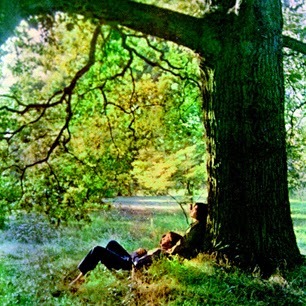 Plastic Ono Band
(AM9)Artist: John LennonProduced by: John Lennon, Yoko Ono and Phil SpectorReleased: December 11, 1970Length: 39:45Tracks: 1) Mother (5:34); 2) Hold On (1:52); 3) I Found Out (3:37) 4) Working Class Hero (3:48); 5) Isolation (2:51); 6) Remember (4:33) 7) Love (3:21); 8) Well, Well, Well (5:59); 9) Look At Me (2:53); 10) God (4:09); 11) My Mummy's Dead (:49)Players: John Lennon - vocals, guitar, piano, organ; Ringo Starr - drums, percussion; Klaus Voorman - bass; Phil Spector - piano, synths; Billy Preston – Piano ("God")
Plastic Ono Band
(AM9)Artist: John LennonProduced by: John Lennon, Yoko Ono and Phil SpectorReleased: December 11, 1970Length: 39:45Tracks: 1) Mother (5:34); 2) Hold On (1:52); 3) I Found Out (3:37) 4) Working Class Hero (3:48); 5) Isolation (2:51); 6) Remember (4:33) 7) Love (3:21); 8) Well, Well, Well (5:59); 9) Look At Me (2:53); 10) God (4:09); 11) My Mummy's Dead (:49)Players: John Lennon - vocals, guitar, piano, organ; Ringo Starr - drums, percussion; Klaus Voorman - bass; Phil Spector - piano, synths; Billy Preston – Piano ("God")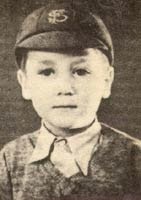
Poet, TS Eliot popularized the "objective correlative;" the idea that in order for a work to gain value moving forward, emotional content must be non-specific. Here, as an example, is a scene from a cheesy melodrama: Fade in - a cemetery filled with weather-worn headstones, droplets of rain cascading down stone angel faces; a small congregation of people dressed in black holding umbrellas. An old woman raises a veil, takes off a ring, places it on a coffin; faint sobbing is audible. Slowly the clouds break and a shaft of sunlight shines on a single blooming yellow marigold. Credits.
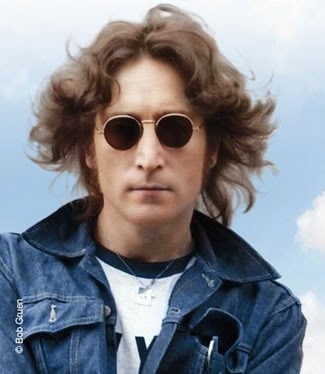 The viewer's emotional response, which starts off somber, ends with renewed hope for the old woman, though the filmmaker provides nothing tangible to conjure this analysis. Sunlight induces joy as readily as it causes skin cancer; a marigold by itself is pretty, but one doesn’t necessarily sense optimism in its presence. The emotional response originates, not in a word, image, action or reaction, but in the combination of all; a sort of emotional algebra. The objective correlative is the formula for creating a specific emotional reaction merely by the juxtaposed presence of common words, objects, or items. The sum is greater than the parts.
The viewer's emotional response, which starts off somber, ends with renewed hope for the old woman, though the filmmaker provides nothing tangible to conjure this analysis. Sunlight induces joy as readily as it causes skin cancer; a marigold by itself is pretty, but one doesn’t necessarily sense optimism in its presence. The emotional response originates, not in a word, image, action or reaction, but in the combination of all; a sort of emotional algebra. The objective correlative is the formula for creating a specific emotional reaction merely by the juxtaposed presence of common words, objects, or items. The sum is greater than the parts.  For our purposes in analyzing music, the theory maintains that the songwriter's itinerary cannot be so specific as to render the listener unable to respond without a back story. Though an appealing ideology (and one that AM is often guilty: reviewing music in a vacuum), dismissing what is topical ofttimes diminishes content. "For What It’s Worth" seems the perfect reflection of war protests, yet the song really addresses the teen riots on the Sunset Strip (see the post from February 21, 2015). The song’s impact, though, is not lessened based on this misinterpretation (reinforcing Eliot’s theory), yet that is not always the case.
For our purposes in analyzing music, the theory maintains that the songwriter's itinerary cannot be so specific as to render the listener unable to respond without a back story. Though an appealing ideology (and one that AM is often guilty: reviewing music in a vacuum), dismissing what is topical ofttimes diminishes content. "For What It’s Worth" seems the perfect reflection of war protests, yet the song really addresses the teen riots on the Sunset Strip (see the post from February 21, 2015). The song’s impact, though, is not lessened based on this misinterpretation (reinforcing Eliot’s theory), yet that is not always the case.John Lennon’s "God," is the antithesis of the theory. "God" is Lennon denouncing his past, his influences, his beliefs and associations. The song can have no impact sung by anyone but Lennon (as it was by Andrew McMahon on the Instant Karma: Save Darfur tribute album). Certainly comments about Yogi or Elvis or "Zimmerman" (Bob Dylan) can be interpolated by any singer, but lines like "I don’t believe in Beatles…I just believe in me (Yoko and me)," make the song valueless by any interpretation other than Lennon's.
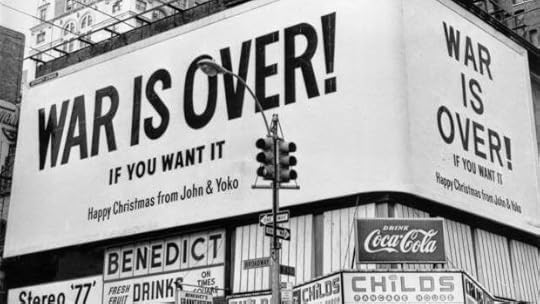
Plastic Ono Band is an album that personal. After the breakup of The Beatles, John released several singles ("Give Peace A Chance," "Cold Turkey," "Instant Karma!") and experimental (i.e. unlistenable) albums with Yoko Ono (Unfinished Music No.1: Two Virgins, Unfinished Music No.2: Life with the Lions, and Wedding Album) before delivering Plastic Ono Band, his first bold post-Beatles solo album. Using sparse rock 'n' roll as the backbone for baring his soul (and greatly influenced by the primal scream therapy of Dr. Arthur Janov), Lennon angrily denounces his past ("God"), looks back at his painful relationship with his parents ("Mother," "My Mummy’s Dead"), blasts hippie hangers-on looking for a handout ("I Found Out"), and professes his love for Yoko on several accounts as he searches for peace of mind and a spiritual sense of self. "Mother" is one of John's most affecting songs, particularly its anguished, oft-repeated last line ("Mother don’t go, daddy come home."). Another key track, the most familiar on the album, "Working Class Hero," features Lennon "unplugged" and some bitingly cynical social commentary.

Though the album is at times more impressive than enjoyable, Lennon’s brilliant vocal performance makes up for its shortcomings. The exceedingly spry instrumentation, centered on Lennon's guitar and piano work, Klaus Voorman's bass, and the backbeat of Ringo Starr, distances Lennon from the lush sonics of Abbey Road and his former identity ("I was the walrus, but now I'm John"). In direct contrast to his usual grandiose productions, Spector is smart and ego-less enough to let the songs' primitive strengths shine through.
If The Beatles' breakup and Altamont hadn’t signaled the end of the '60s, John singing "the dream is over" certainly did. The album's enduring reputation (despite being a commercial failure) is due to its incredible intensity and unflinching honesty. Though many of the songs are soft spoken, John would never again give such a visceral performance.
50 years ago, Lennon considered this his finest moment and referred to it as Sgt. Lennon; the name suggesting that Sgt. Pepper was Paul's best work, and this was his. It was released on December 11.
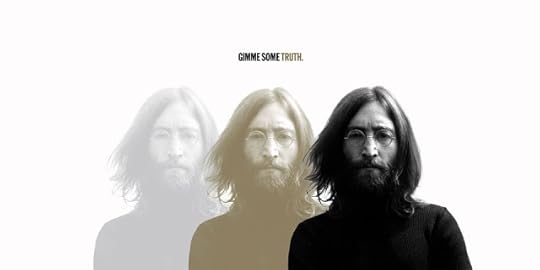
Published on November 29, 2020 09:43
November 26, 2020
Happy Thanksgiving!
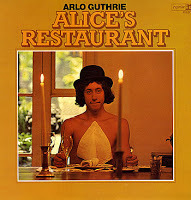 Recorded in 1967, Arlo Guthrie's "Alice's Restaurant," the 18- minute counterculture anthem recounts the storyteller's real-life encounter with the law on Thanksgiving Day 1965. As the song unfolds, we hear all about how a hippie-bating police officer by the name of William "Obie" Obanhein arrested Arlo for littering. (Cultural footnote: Obie previously posed for several Norman Rockwell paintings, including the well-known painting, "The Runaway," that graced a 1958 cover of The Saturday Evening Post.) In fairly short order, Arlo pleads guilty to a misdemeanor charge, pays a $25 fine, and cleans up the trash.
Recorded in 1967, Arlo Guthrie's "Alice's Restaurant," the 18- minute counterculture anthem recounts the storyteller's real-life encounter with the law on Thanksgiving Day 1965. As the song unfolds, we hear all about how a hippie-bating police officer by the name of William "Obie" Obanhein arrested Arlo for littering. (Cultural footnote: Obie previously posed for several Norman Rockwell paintings, including the well-known painting, "The Runaway," that graced a 1958 cover of The Saturday Evening Post.) In fairly short order, Arlo pleads guilty to a misdemeanor charge, pays a $25 fine, and cleans up the trash. 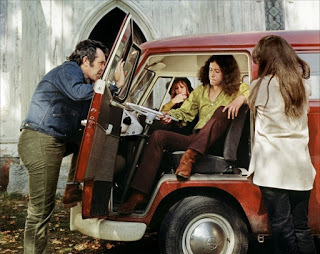 But the story isn't over. Not by a long shot. Later, when Arlo (son of American icon Woody Guthrie) gets called up for the draft, the petty crime ironically becomes a basis for disqualifying him from military service in the Vietnam War.
But the story isn't over. Not by a long shot. Later, when Arlo (son of American icon Woody Guthrie) gets called up for the draft, the petty crime ironically becomes a basis for disqualifying him from military service in the Vietnam War. Guthrie recounts this with some bitterness as the song builds into a satirical protest against the war: "I’m sittin' here on the Group W bench 'cause you want to know if I'm moral enough to join the Army, burn women, kids, houses and villages after bein' a litterbug." And then we're back to the cheery chorus again: "You can get anything you want, at Alice's Restaurant." Who would have thought that a Thanksgiving tradition was born. The song would later become the inspiration for the 1969 cult classic film of the same name.
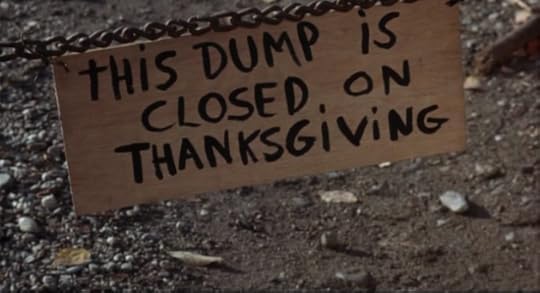
Published on November 26, 2020 07:15
November 20, 2020
Brian Eno
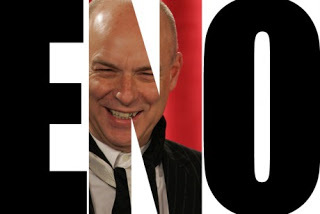 There's an axiom that if you remember Woodstock you weren't there. Although the protagonist in my novel Miles From Nowhere (a follow-up to Jay and the Americans – coming September 2018) makes it to the Aquarian Festival (late), recalling it all (mostly), I believe there's something indeed that obliterates the recollection of our wild years; Quaaludes maybe. That said, I remember Roxy Music no sooner than Manifesto or Flesh + Blood, "Love is the Drug," the club-life exception. But my informative years didn't focus on the history or the music, I didn't know the names or the stories until I started my writing internship with the L.A. Weekly while dating an intern at Epic Records. Though we didn't get along, she was the most influential person in my life when it came to music, introducing me (during the failed Part 2 of our relationship), to Kate Bush, artists like Harold Budd and neoclassical darkwave. I went quickly from casual listener to student. It was through her as well that I discovered (read that as recognized) Eno (there was no "Brian" associated with the name at the time). In the glam era, it was hard not to notice Eno, who with Bowie and Bolan, Reed and Pop trailblazed the glam pathway. While my internist introduced me to Eno in Roxy, I take the credit for establishing, soon after, my 40-year relationship with Brian. For me, these are the LPs that have remained over the years so prevalent in my rotation (but don't confuse this with a complete discography):
There's an axiom that if you remember Woodstock you weren't there. Although the protagonist in my novel Miles From Nowhere (a follow-up to Jay and the Americans – coming September 2018) makes it to the Aquarian Festival (late), recalling it all (mostly), I believe there's something indeed that obliterates the recollection of our wild years; Quaaludes maybe. That said, I remember Roxy Music no sooner than Manifesto or Flesh + Blood, "Love is the Drug," the club-life exception. But my informative years didn't focus on the history or the music, I didn't know the names or the stories until I started my writing internship with the L.A. Weekly while dating an intern at Epic Records. Though we didn't get along, she was the most influential person in my life when it came to music, introducing me (during the failed Part 2 of our relationship), to Kate Bush, artists like Harold Budd and neoclassical darkwave. I went quickly from casual listener to student. It was through her as well that I discovered (read that as recognized) Eno (there was no "Brian" associated with the name at the time). In the glam era, it was hard not to notice Eno, who with Bowie and Bolan, Reed and Pop trailblazed the glam pathway. While my internist introduced me to Eno in Roxy, I take the credit for establishing, soon after, my 40-year relationship with Brian. For me, these are the LPs that have remained over the years so prevalent in my rotation (but don't confuse this with a complete discography):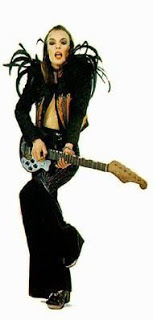 1972 - Roxy Music, Roxy Music: The first Roxy Music album finds the British glam rockers injecting the, by then, stale blues rock of the era with an eyeliner-rimmed rawness neatly paired with progressive rock underpinnings of Phil Manzanera's wailing guitar. Although Eno didn't have a musical background, he quickly became a multi-instrumentalist and lent an experimental artistry via synthesizer and tape effects.
1972 - Roxy Music, Roxy Music: The first Roxy Music album finds the British glam rockers injecting the, by then, stale blues rock of the era with an eyeliner-rimmed rawness neatly paired with progressive rock underpinnings of Phil Manzanera's wailing guitar. Although Eno didn't have a musical background, he quickly became a multi-instrumentalist and lent an experimental artistry via synthesizer and tape effects.1973 - Roxy Music, For Your Pleasure: While less accessible than Roxy Music's first album (although this writer's preferred LP), For Your Pleasure landed neatly at the top of the British charts. Americans, however, were lost: Rolling Stone's Paul Gambaccini wrote, "The bulk of For Your Pleasure is either above us, beneath us, or on another plane altogether." Were it not for the incredible album jacket, I never would have picked it up.
1973 - Here Come the Warm Jets: Arguably Eno’s most seminal and timeless work was conceived directly after his departure from Roxy Music (with band alumni Phil Manzanera and Andy Mackay). The album was painfully simple. Like artists such as T-Rex, whose Electric Warrior came out two years prior, the music bears spacious simplicity. Blank space was the goal. "I enjoy working with simple structures such as these, for they are transparent — comparable to a piece of graph paper and its grids. The grid serves as the reference point for the important information — the graph line itself."
1973 - Fripp & Eno: No Pussyfooting: I'd listen to this over and over while doing my homework drifting in and out of it's dreamy soundscape. When I worked at the Weekly, a woman in her mid-30's asked me if I could suggest something rather seductive, at which point, being 19, I swallowed my tongue. I mentioned No Pussyfooting and said if she wasn't happy with it, I'd buy it from her because my 3rd copy was getting a bit noisy, pop and scratch wise (we're so spoiled now). She said she liked the suggestive title. A day or two later, she came back into my office (cubicle) and said she bought Music for Airports and Another Green World.
 1974 - Taking Tiger Mountain (By Strategy): A concept album inspired by a Chinese book of postcards depicting an opera: pure art rock. One of my go to LPs at 3am.
1974 - Taking Tiger Mountain (By Strategy): A concept album inspired by a Chinese book of postcards depicting an opera: pure art rock. One of my go to LPs at 3am.1975 - Another Green World: Another stellar used records find.
1977 - Before & After Science: To kick off another wholly prolific year, this album explores cagey drum sequences, African polyrhythms and layered sounds. It marries the two divergent paths Eno's music traverses — insular ambience and raucous rock, whether of the polyrhythmic or painfully simple variety.
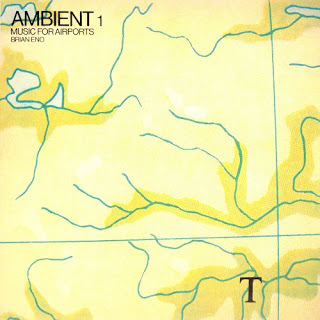 1977 - Ultravox, Ultravox!: The Ultravox album was slammed upon its release as contrived, intellectual art-rock offered up by washed-out, synth-loving Brits with shiny new clothes. The band's obsession with the fading electro-pop genre in 1977 seemed antiquated at a time when punk rock's trajectory was more defiantly vocal. Yet the album has stood the test of time, it's the new wave we think back on far more fondly than the punk era (for me, probably because all the new wave posers were as skinny and passive as I was - I never got beat up at a new wave venue, lol. That was not the case when I ventured into the L.A. punk scene).
1977 - Ultravox, Ultravox!: The Ultravox album was slammed upon its release as contrived, intellectual art-rock offered up by washed-out, synth-loving Brits with shiny new clothes. The band's obsession with the fading electro-pop genre in 1977 seemed antiquated at a time when punk rock's trajectory was more defiantly vocal. Yet the album has stood the test of time, it's the new wave we think back on far more fondly than the punk era (for me, probably because all the new wave posers were as skinny and passive as I was - I never got beat up at a new wave venue, lol. That was not the case when I ventured into the L.A. punk scene).1977 - David Bowie: Low and "Heroes": Low balanced A-side rock with B-side instrumentals. Producer Tony Visconti captured Bowie's humanity in the wake of his recent departure from Los Angeles and its hedonistic claims on his soul. Bowiet called L.A. "the most vile piss-pot in the world," while Berlin was a "Spartan antidote" where he could/would recover from drug-fueled psychosis and make music (by Let's Dance, many of us were hoping for a relapse). Each LP features Eno on synth, keys and guitar, while the loose guitar stylings of Robert Fripp lend rawness to Visconti's impeccable production. I don't include Lodger, here. I have a tendency still to overlook it.
1978- Ambient 1: Music for Airports: While Eno ventured into the experimental ambient genre prior to Airports, the album levitated his relationship with the genre. Eno wasn't courting Billboard charts with this album (was he ever?), but instead wanted the music (as he wrote in the liner notes) to "accommodate many levels of listening attention without enforcing one in particular; it must be as ignorable as it is interesting."
1979 - Talking Heads, Fear of Music: A transitional, and perhaps difficult album for Talking Heads, one that led out of the punk era and into a more refined sense of artistry.

1980 - Talking Heads: Remain in the Light: In what was the largest commercial flop for Talking Heads, and the most important of their career, Remain in the Light fused pulsing guitar with African drums and time signatures that were difficult to digest in the bloated Pepto Bismol corpus of popular music in 1980. David Byrne told Rolling Stone that critical consensus was that it "too black for white radio and too white for black radio." Byrne and Eno, who later had a falling out in the studio, studied African voodoo and percussion before applying it in the studio. "Once in a Lifetime" of course would go on to become a hit and Talking Heads most iconic tune.
Of course Eno would collaborate with Byrne on My Life in the Bush of Ghosts and produce U2's phenomenal Joshua Tree, I was off to New York in my club years - another era of "I don't remember; I don't recall."
Published on November 20, 2020 07:56
Eno
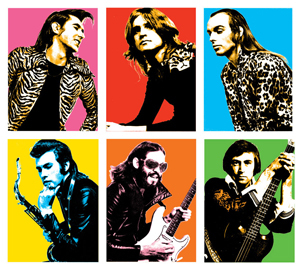 Roxy Music transformed sound into pop-art, influencing generations of music makers. One of these artists was Steve Jones, the former Sex Pistols guitarist, who claimed that everything about Roxy Music - their sound, their dress, their packaging - was his inspiration for pursuing a career in music. In 2006, Jones wanted to do something creative - an homage, so to speak - to acknowledge this influence. With idea in hand, Jones approached Shepard Fairey and together, they formed "Swindle, Inc." and set out to execute their first collaborative effort, the "Roxy Music Print Series." Shepard's graphic mission was not so much as to rebrand it with his own interpretation (unusual for Fairey), but to simply amplify the strong, visual identity already established by the band. The result: a stunning set of large silkscreen prints, saturated with color, visual texture and the hope to inspire new fans to the sounds of Roxy Music.
Roxy Music transformed sound into pop-art, influencing generations of music makers. One of these artists was Steve Jones, the former Sex Pistols guitarist, who claimed that everything about Roxy Music - their sound, their dress, their packaging - was his inspiration for pursuing a career in music. In 2006, Jones wanted to do something creative - an homage, so to speak - to acknowledge this influence. With idea in hand, Jones approached Shepard Fairey and together, they formed "Swindle, Inc." and set out to execute their first collaborative effort, the "Roxy Music Print Series." Shepard's graphic mission was not so much as to rebrand it with his own interpretation (unusual for Fairey), but to simply amplify the strong, visual identity already established by the band. The result: a stunning set of large silkscreen prints, saturated with color, visual texture and the hope to inspire new fans to the sounds of Roxy Music.Note: The preceding paragraph is meant as a transitional tool to associate Shepard Fairey with AM's current focus, Gabriel, Fripp, Roxy, Bowie, '73, '77... Crafty, huh? There’s a Zen to this, see?
 If there is anybody in this world who could penetrate the very nature of SOUND itself, analyze it with a scalpel, yet leave no traces of invasive detritus upon its soul, it's Brian Eno. SOUND, btw, not MUSIC. Have you ever wondered what is the mechanism, the channel between musical notes and our ears? What does music consist of? What makes a certain sound beautiful and another ugly? Ever try to admire the beauty of JUST ONE NOTE? In our everyday life, we're used to music consisting of hurried flurries and trills, but Eno showed us that one note, if used cleverly enough, can be just as awe-inspiring as an entire complex, or catchy, melody.
If there is anybody in this world who could penetrate the very nature of SOUND itself, analyze it with a scalpel, yet leave no traces of invasive detritus upon its soul, it's Brian Eno. SOUND, btw, not MUSIC. Have you ever wondered what is the mechanism, the channel between musical notes and our ears? What does music consist of? What makes a certain sound beautiful and another ugly? Ever try to admire the beauty of JUST ONE NOTE? In our everyday life, we're used to music consisting of hurried flurries and trills, but Eno showed us that one note, if used cleverly enough, can be just as awe-inspiring as an entire complex, or catchy, melody.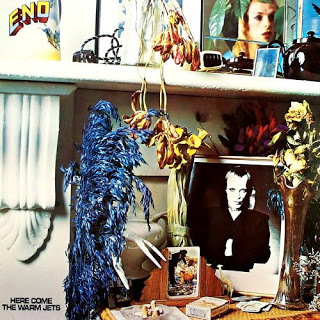 Thing number one is: Brian Eno is more than an "ambient" composer. Lest we forget, Eno started out as a flashy rocker, more in the "art-glam" camp than anywhere else, then he began to experiment with sound atmospheres and synth possibilities, finally switching to full-fledged muzak-making in the late 70s. But whatever the evolution, there's one thing undeniable: Brian's mastery of the pop formula. Back when he used to write melodies, Eno did it with a flavor: be they fast, catchy, memorable, solid rock 'n' roll ditties, or heartfelt, deeply engaging ballads. What's more, he complimented that pop sensibility with a tendency to make everything sound weird, otherworldly, and completely unlike whatever anybody else was doing at the time, even Bowie or Pink Floyd. Brian was indeed a giant of [not-so] popular music.
Thing number one is: Brian Eno is more than an "ambient" composer. Lest we forget, Eno started out as a flashy rocker, more in the "art-glam" camp than anywhere else, then he began to experiment with sound atmospheres and synth possibilities, finally switching to full-fledged muzak-making in the late 70s. But whatever the evolution, there's one thing undeniable: Brian's mastery of the pop formula. Back when he used to write melodies, Eno did it with a flavor: be they fast, catchy, memorable, solid rock 'n' roll ditties, or heartfelt, deeply engaging ballads. What's more, he complimented that pop sensibility with a tendency to make everything sound weird, otherworldly, and completely unlike whatever anybody else was doing at the time, even Bowie or Pink Floyd. Brian was indeed a giant of [not-so] popular music.Trying to understand Eno's take on the pop song is like comprehending the ticking of a clock or the dripping of a water faucet; the emotion that of an escalator at the mall: the proto-art-nerd pinched vocals, the ethereal Beach Boys harmonies, the mean-spirited lyrics, the noisiness. Yet through it all there's an implicit belief in the uplifting power of pop, if only because Eno tries so hard to drag it through the mud. For whatever Dadaist reason, Eno, ater leaving Roxy, wryly and viciously deconstructed the music that he'd been creating. With the help of several members of that band, and the addition of Robert Fripp, Eno shredded the aesthetics of conventional songcraft. He didn't even play any instruments himself, acting as more of a master of ceremonies, treating the other player's contributions to a wild array of unpredictable sound processors, twisting and warping them to coax out otherworldly noises and textures. Simultaneously jagged and dreamy, the songs reverberate with Fripp's buzzing, solarized guitar slashes and Eno;s mocking vocals.
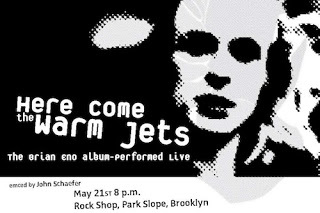 Each track of the "pop" (pre-ambient) LPs is a new experiment, particularly those of Here Come the Warm Jets. "Blank Frank" sounds like it's several dozen insects pounding away on typewriters while an unhinged keyboard see-saws back and forth over the top of Eno's deranged, stuttering-madman vocals. It has more than a hint of the Velvet Underground's manic riffing, as well. "Some Of Them Are Old" sways in the other direction, hinting at the ambient soundscapes Eno would pioneer a few years hence, drifting off with a bright, wobbly, plucked guitar arpeggio that gently morphs into the title track, "Here Come the Warm Jets" (named for the guitar treatment he'd created for Fripp, saying it sounded like a "tuned jet"). Layers of humming, luminescent guitars ebb and flow as a simple drumbeat wafts in from the distance, holding the tension by remaining slightly out of phase until the song's climax when it dramatically syncs with the emergence of some odd, sing-songy, chanted vocals. The effect is epic and sustains itself just long enough to induce a tingling sensation before breaking apart into mist. Warm Jets is where ambient starts, the catalyst for Harold Budd, Laurie Anderson, Gary Numan and Jack White. Eno invented 3am.
Each track of the "pop" (pre-ambient) LPs is a new experiment, particularly those of Here Come the Warm Jets. "Blank Frank" sounds like it's several dozen insects pounding away on typewriters while an unhinged keyboard see-saws back and forth over the top of Eno's deranged, stuttering-madman vocals. It has more than a hint of the Velvet Underground's manic riffing, as well. "Some Of Them Are Old" sways in the other direction, hinting at the ambient soundscapes Eno would pioneer a few years hence, drifting off with a bright, wobbly, plucked guitar arpeggio that gently morphs into the title track, "Here Come the Warm Jets" (named for the guitar treatment he'd created for Fripp, saying it sounded like a "tuned jet"). Layers of humming, luminescent guitars ebb and flow as a simple drumbeat wafts in from the distance, holding the tension by remaining slightly out of phase until the song's climax when it dramatically syncs with the emergence of some odd, sing-songy, chanted vocals. The effect is epic and sustains itself just long enough to induce a tingling sensation before breaking apart into mist. Warm Jets is where ambient starts, the catalyst for Harold Budd, Laurie Anderson, Gary Numan and Jack White. Eno invented 3am.
Published on November 20, 2020 07:56
November 11, 2020
City in the Smog – From Joni to Neil

California and Los Angeles are the two most common locales in song. From “California Dreamin’” to Led Zeppelin’s “Goin’ to California,” the rock era has embraced the Left Coast. To paraphrase Mr. Mojo, “The West is Best.” But it’s not always about California dreams – at times the sentiments are nightmares, as well. L.A. is a metaphor indeed for broken dreams and loneliness as many times as it is one of hope and joy, and often, the sentiments are that easy to decipher. Joni Mitchell sings about California with a sense of home and comfort. After what seems a pleasant enough sojourn in France and the Grecian Isles, she sings:And I might have stayed on with him thereBut my heart cried out for you, CaliforniaOh California, I'm coming homeOh make me feel good rock 'n' roll bandI'm your biggest fanCalifornia, I'm coming home…Led Zeppelin picks up on the Mamas and Papas theme with the line “Someone told me there's a girl out there with love in her eyes and flowers in her hair.”Steely Dan in “Bad Sneakers” dream instead about going back east to get away from that “Fearsome excavation on Magnolia Boulevard,” or about the “Ditch out in the Valley that they’re diggin’ for me.”Neil Young shows the angst of those who love the Southland and hate it simultaneously in a rarity from Time Fades Away called simply, “L.A.”:By the look in your eyesYou'd think that it was a surpriseBut you seem to forgetSomething somebody saidAbout the bubbles in the seaAnd an ocean full of treesAnd you know, L.A.Uptight city in the smog, city in the smogDon't you wish that you could be here too?Don't you wish that you could be here too?Don't you wish that you could be here too?Well, it's hard to believeSo you get up to leaveAnd you laugh at the doorThat you heard it all beforeOh, it's so good to knowThat it's all just a show for youWhen the suppers are plannedAnd the freeways are crammedAnd the mountains eruptAnd the valley is suckedInto cracks in the earthWill I finally be heard by you?L.A.Uptight city in the smog, city in the smogDon't you wish that you could be here too?Don't you wish that you could be here too?Don't you wish that you could be here too?It’s all about the emotional relationship one has with the Golden State, love it or hate, or both, and maybe it's The Decemberists who nail down that quandary within us:
O great calamity,
Den of iniquity and tears
How I abhor this place
Its sweet and bitter taste
Has left me wretched, wretching on all fours
Los Angeles, I'm yours
Red Hot Chili Peppers continue the contradiction in "Under the Bridge:"
At least I have her love, the city, she loves me
Lonely as I am, together we cry
But, on a Saturday, the roof down, it's Randy Newman who sums it up:
Roll down the window, put down the topCrank up the Beach Boys, babyDon't let the music stopWe're gonna ride it tillWe just can't ride it no more
From the South Bay to the ValleyFrom the West Side to the East SideEverybody's very happy'Cause the sun is shining all the timeLooks like another perfect day...
Published on November 11, 2020 05:30



